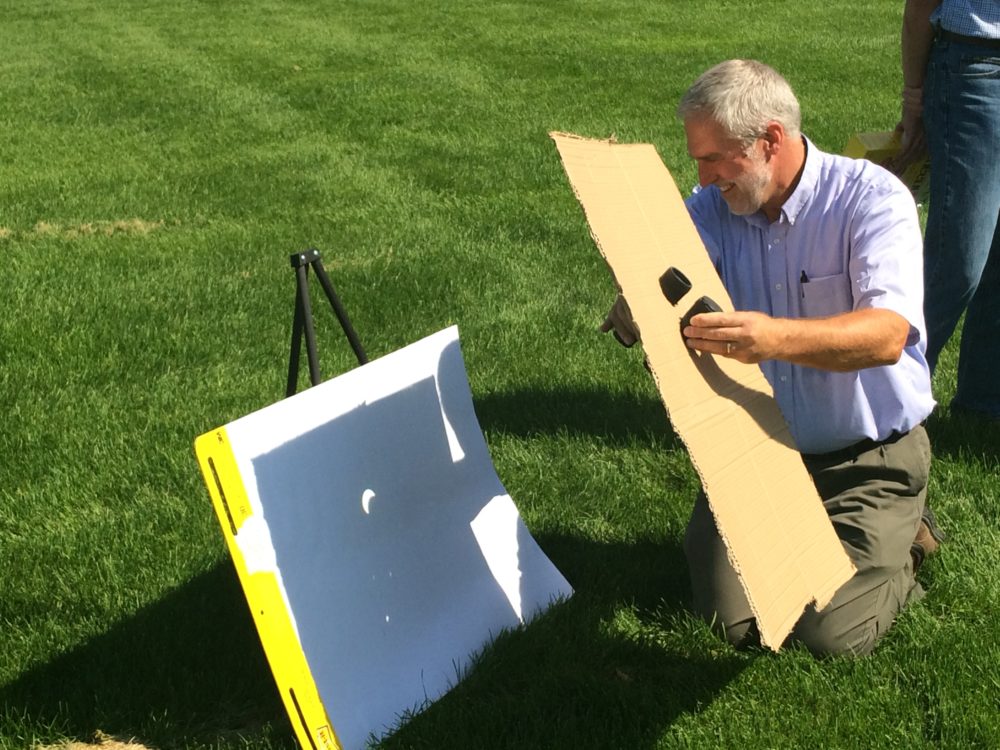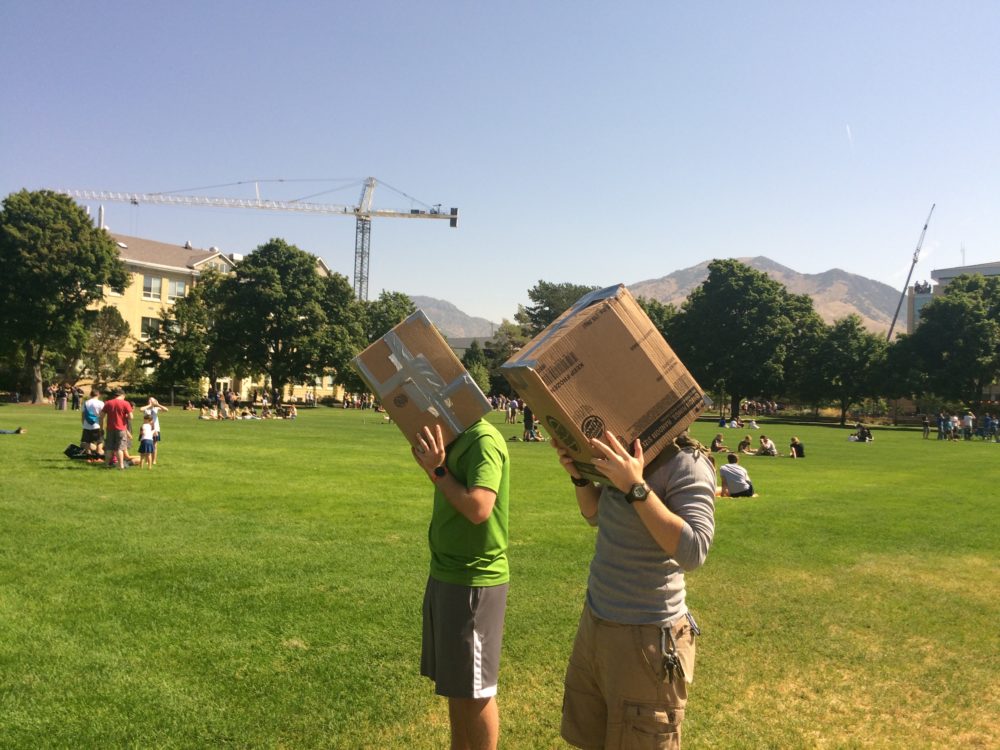USU scientists study radio waves during eclipse
For the first time since 1918, a solar eclipse was visible from coast to coast and also gave scientists a better chance to show how sunlight affects radio signals.
Students and faculty gathered on the Quad on Monday to witness the historic event while students in the Utah State Department of Physics did experiments.
“An eclipse is so important,” said John Mojica, an undergraduate physicist at USU. “It was because of an eclipse in 1919 that the theory of relativity was accurately measured and testified, proving that Einstein was right.”
Mojica said the eclipse was a rare opportunity for this type of research and “the first time that scientists will be able to collect good results.”
During the eclipse, Mojica conducted an experiment with the eclipse’s effects on radio waves. Mojica hopes that his study of the eclipse will help scientists better understand the ionosphere.
Only 95 percent of the sun was covered at the peak of the eclipse in Logan, since it was about 130 miles south of the path of totality (about 70 miles wide) in Idaho, where the moon completely covered the sun at one point for up to two minutes.
[quote text_size=”small”]
“It was because of an eclipse in 1919 that the theory of relativity was accurately measured and testified, proving that Einstein was right.”
– John Mojica undergraduate physicist at USU
[/quote]
On August 21, the United States witnessed a total eclipse of the sun from coast to coast as it spanned from Oregon to South Carolina. The next total solar eclipse won’t be visible from Logan until June 2169, according to USU Department of Physics observatory manager James Coburn. There will be plenty of solar eclipses from now until then, you’ll just have to travel out of state to see them.
“It was really cool to see the dark and the light mix together,” said Cache Valley resident Skyler Jones, who was one of many on the Quad including USU students who watched the spectacle from the heavens.

By using binoculars, cardboard, and a sketchpad, eclipse watchers could project the shadow of the moon over the sun onto a white background.
While the sky didn’t go as dark as sunset, it still offered an exciting opportunity for those watching on campus, according to USU freshman Makayla Ceipert, who described the experience as something resembling an overcast day (even though there was hardly a cloud in the sky). She said the temperature also dropped about 10 degrees during the partial eclipse.
Starting at 10:15 a.m., the moon began its slow crawl to cover the sun; at this time, there was hardly a soul out on the Quad. By 11:30 a.m., a large crowd had flooded the grassy area to witness the peak of the eclipse.
As the peak began at 11:33 a.m., “Total Eclipse of the Heart” by Bonnie Taylor started playing over a loudspeaker.
As the peak of the eclipse ended, “Here Comes the Sun” was played and people began to cheer after realizing the once in a lifetime opportunity was over.
Students ended the festivities by singing “The Scotsman.”

Students get creative as they use cardboard boxes with pinholes to watch the solar eclipse.
People used a variety of ways to observe the eclipse such as solar glasses, pinhole boxes and even binoculars used to project the shadow onto a white background.
USU alumnus Juan Camilo was grateful to get to see the eclipse just in time. He arrived in the U.S. from the Dominican Republic less than 24 hours before the time of the eclipse.
“I’m excited for how rare it is, because some people in their lifetimes don’t get to see the eclipse, so I feel grateful that I can see this.”
—Dillan.passmore@aggiemail.usu.edu
@dirtyghettopass


 : Canon 5D Mark IV Lens: EF 16-35mm f/2.8L II Aperture: f/4 ISO: 3200 Shutter Speed: 1/500 Focal Length: 16mm #canon #5d #5dmarkiv #canonusa #solareclipse #solareclipse2017 #tetons #grandtetons #snakeriver #travel #photooftheday #photography
: Canon 5D Mark IV Lens: EF 16-35mm f/2.8L II Aperture: f/4 ISO: 3200 Shutter Speed: 1/500 Focal Length: 16mm #canon #5d #5dmarkiv #canonusa #solareclipse #solareclipse2017 #tetons #grandtetons #snakeriver #travel #photooftheday #photography